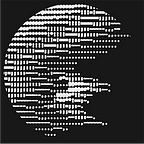Announcement
Untruth Tellers
Unveiling the next three works of the K21 Collection
Computers are supposed to tell the truth. Programming languages must be able to distinguish between true and false in order to perform their required functions. The foundation of logical operations in computing requires an irrefutable presence of verity (and an acknowledgement of what is incorrect). For those who came of age in the era of the PC, it was assumed that computers always got it right: mathematical calculations, scientific formulae, and immense amounts of data could be stored and set in motion on a scale and at a speed that far outperformed the human brain. Since truth is essential for its functioning, the computer’s promise was one of utmost precision. So how did it all go so wrong?
Everyone with Internet access today encounters an endless stream of misinformation, deliberate lies or grossly manipulated truths. The network that connects networks of computers worldwide through universal protocols does not seem capable of verifying the data it shares. Can we blame the Internet or is this a failure of human ethics? The tribal think enabled and amplified by social media and partisan news may be powered by computers, but it is marked by a failure of consciousness rather than a glitch in the digital system. We are living in the era of post-truth — when utter fabrications functioning as click-bait determine the discourse, when the idea of fact-checking is nothing but a quaint newsroom artifact or a weapon to silence dissent, when reality can be molded to nefarious purposes in the name of social good by trolls and influencers, bot armies and governments alike.
Artists have always brokered in that generative space between truth and fiction, understanding the fine line between veracity and creative misrepresentation. It is their job to tell the rest of us stories, — as in the K21 Collection artworks by Liam Gillick, China Tracy, and David OReilly. They do not to trick or manipulate, but rather expand the mind beyond the immediately comprehensible, challenge the muscle of imagination, give form to scenarios of wonder.
In On the Appearance of Noncircularity, 2021, Liam Gillick contemplates the idea of artists telling lies in the logical paradox programmed as an NFT. Rotating circles of text proclaim, “An infinite queue of artists… Each artist thinks at least some of the artists behind them… Are thinking an untruth.” This staged puzzle imagines a line of artists stretching in both chronological directions each suspecting that the ones who came before them have not told the truth, but they could also be, themselves, the very artist suspected of deploying untruths. To claim otherwise, might be a lie. This mental conundrum raises art’s tenuous relationship to truth, puts Gillick himself in the dubious position of suggesting he, too, could be a liar, and reminds us that while art may seek a form of truth, it is not bound by it.
View On the Appearance of Noncircularity in the K21 gallery here →
Read more about Gillick and his artwork here →
For her NFT, Einstein on the Beach — Chasing the Moon / 沙滩上的爱因斯坦-追月 Cao Fei resurrected her avatar, China Tracy, from Second Life, who powerfully authored the work. Brought back to “life,” this cosmopolitan warrior/cosmonaut finds a world markedly different from the one she inhabited from 2007 to 2011. As an avatar, China Tracy is just a projection, a fiction providing camouflage for its creator (or owner) who, through her, gets to inhabit a new personality with a new appearance. Yet this phantastic embodiment seems to have feelings of her own. The NFT depicts her melancholic presence, her awareness of a world gone awry, and hence, her attempts to flee it in a never ending/never aging cycle.
View Einstein on the Beach — Chasing the Moon / 沙滩上的爱因斯坦-追月 in the K21 gallery here →
Read more about China Tracy and her artwork here →
David OReilly’s 4004 is a 4004-frame-long looping video of an Intel 4004 chip cast in clear resin. The 4004 was the first CPU, that revolutionary system-on-a-chip that put a dent in history fifty years ago this year. Having gone down the rabbit hole to find out how the machines that he built a career using actually work, OReilly spent years tracking one down. Finally successful, he crafted his first-ever physical artwork, a monolith not unlike Kubrick’s (and the aluminum clones that mysteriously began dotting the landscape last year) but transparent. Building on the mythology of the form, OReilly’s monument to the machine exposes its heart, turning the metaphor inside out. It traps the CPU as a mute ballerina doing an endless pirouette, its many sides and the glistening block that multiplies it is a constant reminder of the slippery and protean hall of mirrors it now powers.
View 4004 in the K21 gallery here →
Read more about OReilly and his artwork here →
Sometimes artists deliberately play with the very concept of deceit; they shine a raking light on its operability within culture and society at large. They are not the morality police but rather seers who understand, at least within their own work, the difference between what constitutes actuality, what functions as calculated falsehoods, and the frailty of assuming such definitions are fixed.
